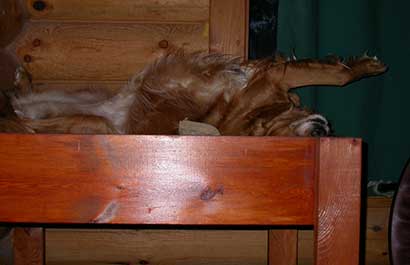A long time ago, I read that a popular novelist wrote down her dreams and turned them into books. Back then, I was a technical writer, and the concept seemed so far away from my writing reality, I couldn’t imagine it ever happening to me.
However now many years later, it turns out it has. I actually have dreamed scenes from my books. My first novel Chez Stinky took a while for me to write because although I’d written 12 books before, they weren’t novels. However, I discovered that some writing tactics do cross over from nonfiction to fiction, at least for me.
The good thing about having written that many words is that I rarely get “writer’s block.” I’m what they call a “plotter” in the fiction-writing world. With nonfiction, you plot out all your chapters and topics. With fiction, you map out the story. Either way, you start with an outline. I got stuck writing the beginning of Chez Stinky because I didn’t have the outline figured out yet. But once I did, everything started falling into place.
Plotters Dream Too
What I discovered is that unlike with nonfiction, when you write a novel, it’s easy to get so absorbed in the story world you create that it permeates your psyche. In the case of Chez Stinky, I discovered that once I knew where the story was going, my mind was working on it all the time. Armed with a solid outline, I started to cruise. My writing speed increased dramatically and I wrote the end of the book in half the time it took to write the beginning.
When I was in the throes of that creative first draft, I started to dream scenes from the book. Needless to say, when I realized what was happening, I thought it was incredibly cool. It’s particularly handy since I write in the morning. So I would dream the scene, then write it down the next morning.
Strategic Dreaming
With my second book, Fuzzy Logic I started trying to dream scenes intentionally. I attempted strategic dreaming, you might say. When I went to bed, I’d think about the upcoming scene I was going to write the next morning. My subconscious worked out some stuff and I dreamed about it. The next morning, I wrote it down.
For this technique to work, I do need to have a plot mapped out, know the characters, and have part of the story already written down. But when it works, it’s a lot of fun. Apparently, Steven Spielberg once said that he “dreams for a living.” Now I know what he was talking about.
